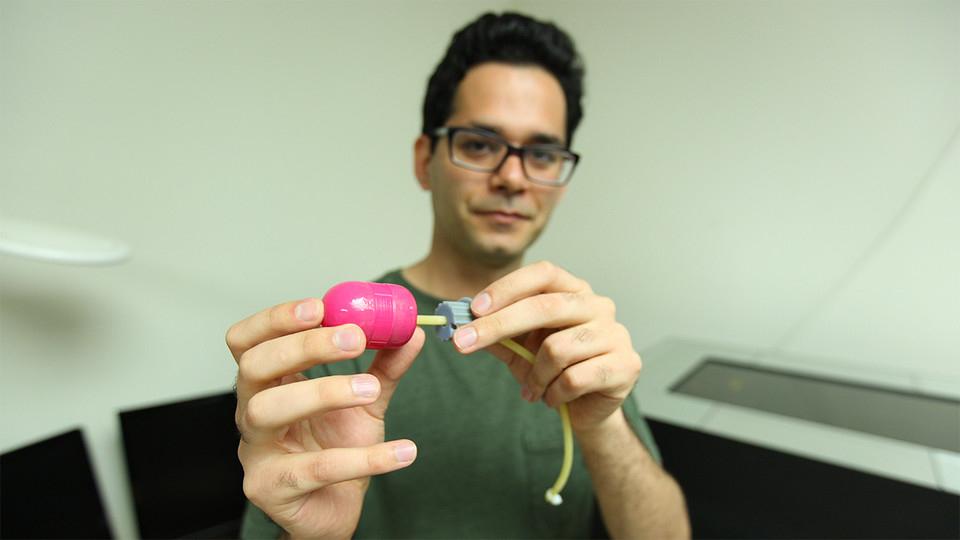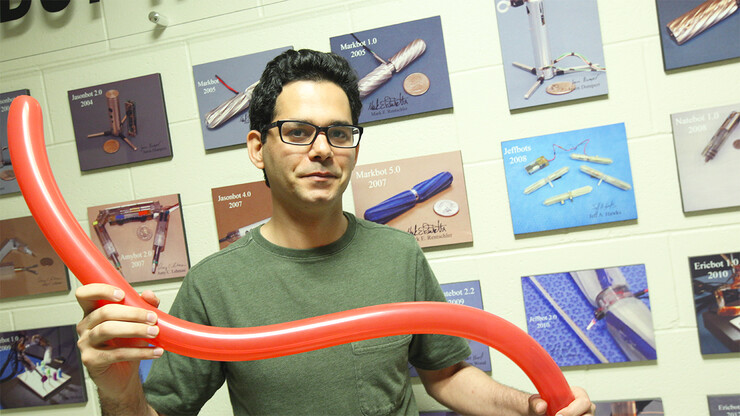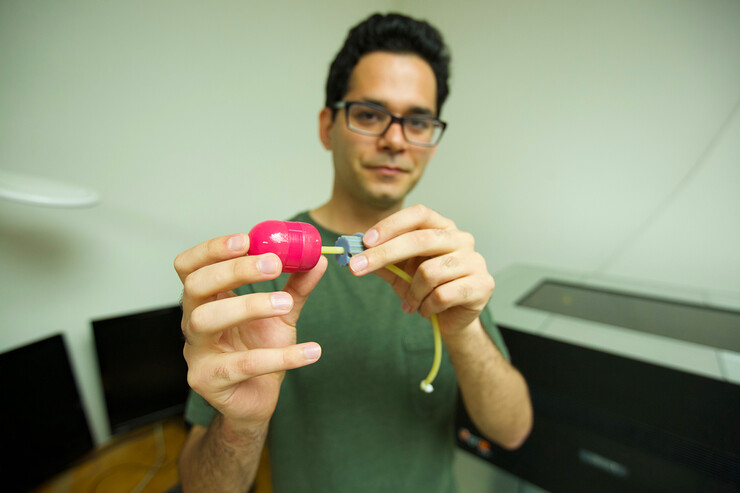· 4 min read
Soft robotic could ease complications, cost of colonoscopy

Hossein Dehghani envisions a future in which a self-driving robot can explore your colon – allowing a human to spend less time navigating the five-foot tunnel and more time performing a potentially life-saving inspection.
A doctoral candidate in mechanical and materials engineering at the University of Nebraska-Lincoln, Dehghani has designed a robotic alternative to the traditional colonoscope that physicians use when searching for pre-cancerous or cancerous polyps that can line the large intestine. The robot could help make the colonoscopy a painless and less costly procedure, Dehghani said.
About one in 20 Americans develop colorectal cancer, which can be effectively treated if diagnosed early. Physicians recommend undergoing a colonoscopy every 10 years starting no later than age 50 – earlier for African-Americans and those with a family history of the disease.
Though many patients feel little pain during or after the procedure, some experience discomfort that usually occurs when the colonoscope catches on the interior of the colon and creates temporary loops in the organ. On rare occasions, the procedure can also rupture the colon or lead to infection.
Dehghani’s solution: a design that uses compressed air to inflate a latex tube and propel its plastic, camera-equipped tip through the colon. That latex tube begins scrunched up in the plastic tip, elongating as it fills with air in much the same way as the tubular balloons used to craft balloon animals.
“Imagine a robot that deforms itself instead of deforming the colon,” said Dehghani, who designed the prototype as part of his dissertation. “That would decrease the pain significantly.”
When testing the prototype in a standalone pig colon, Dehghani and his colleagues found that the pliable latex essentially eliminated friction against the colon wall and reduced the chance of forming a pain-inducing loop. On average, its camera managed to reach the end of the colon in just under a minute, as compared with the five minutes required by a skilled gastroenterologist. The disposable nature of the latex tubing would also lessen the risk of infection, he said.
“Eventually, any traditional and conventional medical procedure will be automated,” Dehghani said. “Even for those procedures that do not (generate) pain, you guarantee reliability and precision and lower risk. In that sense, we would like to make this procedure autonomous.
“To do it manually, a physician must (receive) some training – let’s say one year. But if you have an autonomous robot, where the physician can press a button and the robot does everything, he or she can just focus on the video. We’re taking a big and significant step toward autonomous colonoscopy.”
Though the current prototype requires an operator to regulate air flow for the sake of navigating the colon’s sharp bends and working through potential blockages, the device already includes a safeguard against exceeding a critical pressure threshold.
Eventually, Dehghani said, the design could become fully automated. Combining automation with the technology’s speed would ultimately drive down colonoscopy costs, he said.
In the meantime, Dehghani plans to shrink the camera-equipped tip to less than the diameter of a dime, evaluate alternatives to the latex material and explore the incorporation of polyp-extracting tools. He and his colleagues have filed for patent protection through NUtech Ventures, the university’s intellectual property and commercialization unit.
The team recently authored a study detailing its prototype in the Journal of Medical Engineering and Technology. Dehghani’s co-authors included Benjamin Terry and Carl Nelson, assistant professor and professor, respectively, of mechanical and materials engineering at the University of Nebraska-Lincoln; Dmitry Oleynikov, director of the Center for Advanced Surgical Technology at the University of Nebraska Medical Center; Prithviraj Dasgupta, professor of computer science at the University of Nebraska at Omaha; and Abolfazl Pourghodrat and Charles Welch, alumni of the University of Nebraska-Lincoln.
The team received support from the Nebraska Research Initiative.









